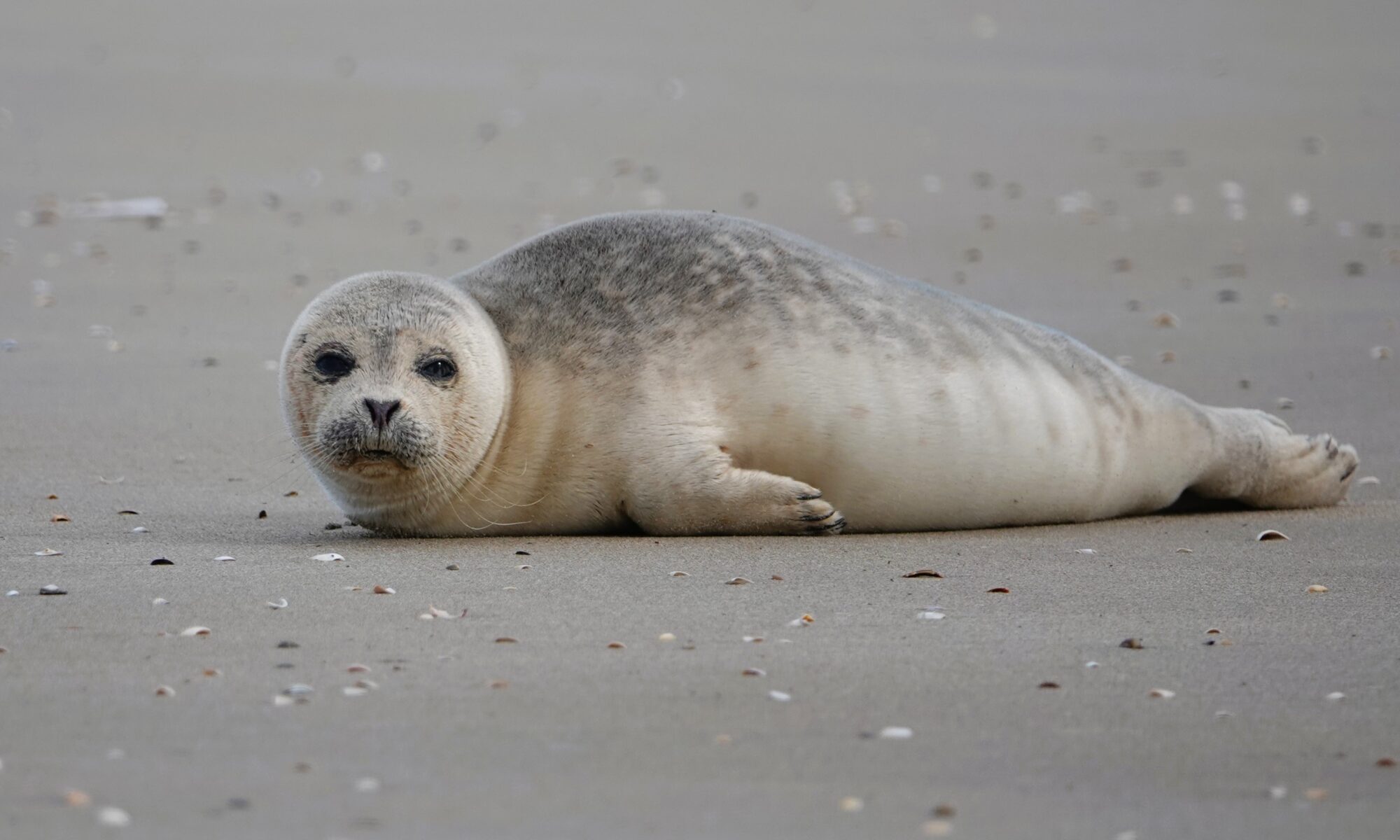In the new report ‘Washed ashore. Marine mammals in Belgium in 2024’, the Institute of Natural Sciences summarises the results of the research into stranded marine mammals in Belgium in 2024. 36 harbour porpoises and 72 seals, as well as a very young minke whale, washed ashore. In addition, the report provides an overview of observations of remarkable species, and focuses on a number of relevant events.
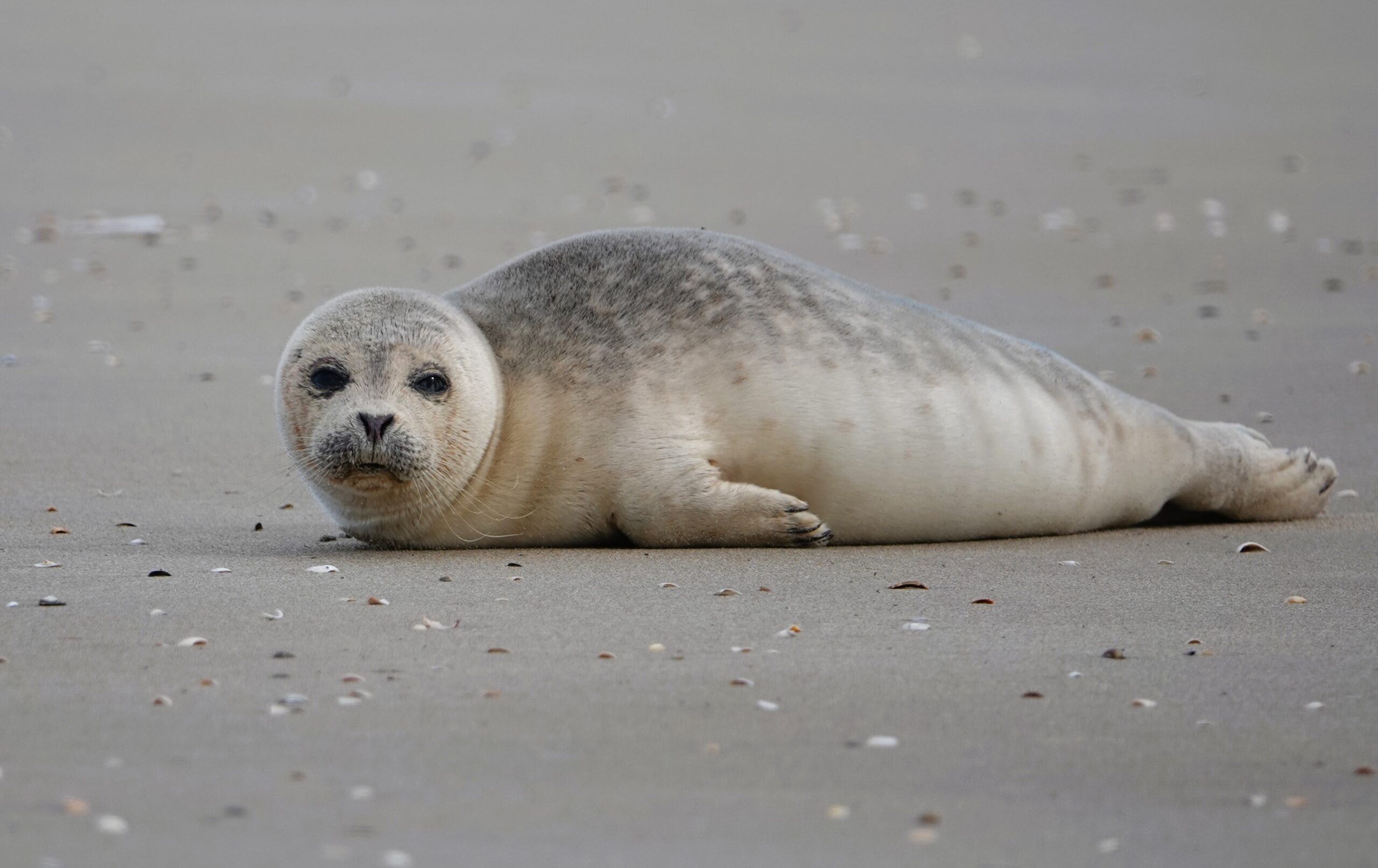
Porpoises on the beach and at sea
In 2024, only 36 harbour porpoises washed ashore in Belgium. This number was only lower in 2023 (26) in the past 22 years. The increasing trend in the number of stranded harbour porpoises, which started around the turn of the century, is the result of a shift in the population within the North Sea, with the species increasingly occupying the southern part. The highest numbers of strandings were recorded ten years ago.
Why the number of stranded harbour porpoises has decreased since then is still unclear. An analysis of the data collected during aerial surveys showed that in 2024 there were relatively low numbers of harbour porpoises in Belgian waters: in April, August and October, the numbers were estimated at 5200, 1000 and 3300 animals respectively. In peak years, there were sometimes three to four times more. A study, together with neighbouring countries, showed that harbour porpoises were disturbed by shipping at relatively great distances.

Seals and minke whale
Beachgoers reported a total of 72 dead seals along the Belgian coast in 2024. These were 34 grey and nine common seals, the others could not be identified to species. For these animals, this is the second highest number in the past 30 years, a trend that is the result of growing populations in the countries surrounding us. On the other hand, Sealife cared for relatively few seals in 2024: six grey and three common.
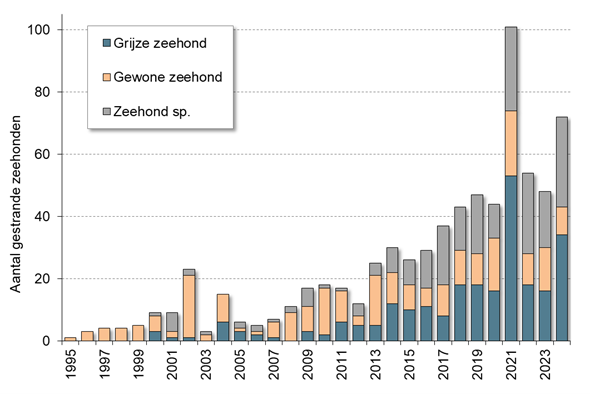
The minke whale that washed ashore in Ostend on 13 May 2024 was only 3.16 m long and was therefore very young. The animal undoubtedly lost its mother and starved to death. It was the only marine mammal that washed ashore in 2024 that was not a harbour porpoise or a seal. The authors take the opportunity to tell the story of two minke whales that ended up here in the 19th century.
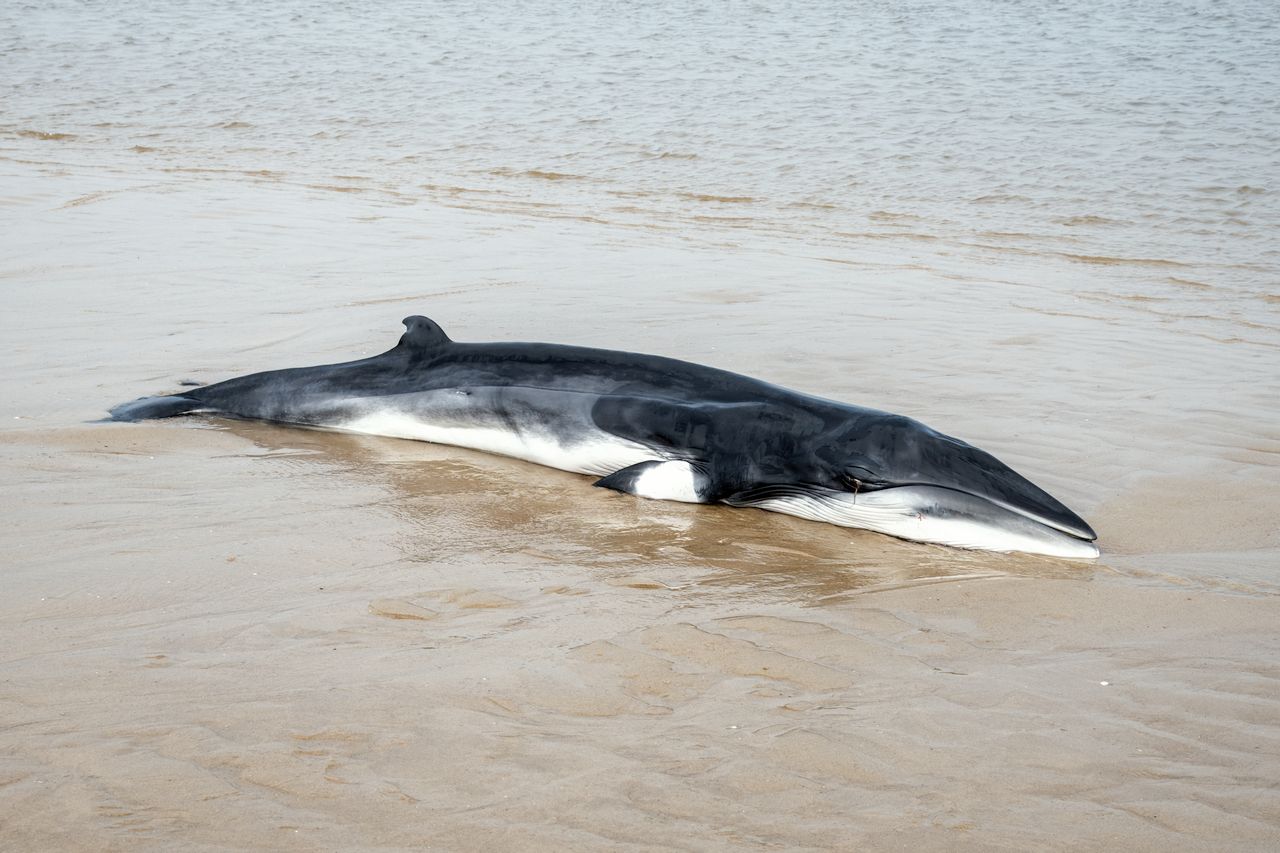
At sea, besides many porpoises, one dead and two live humpback whales, two live minke whales, several bottlenose dolphins, a common dolphin and a pod of white-beaked dolphins were seen.
Whale related events
In 2024, many events were organized around whales. In front of the central station in Antwerp, a life-size blue whale attracted a lot of attention on June 13. The animal was placed there to draw attention to collisions of whales with ships.
But it was especially in Koksijde that there was a lot to experience: from 25 May to 15 September there was a Cabin Art festival with the whale as central theme, and there was the reopening of the NAVIGO National Fisheries Museum on 7 September. A new eye-catcher in that museum is the skeleton of sperm whale Valentijn, buried in the polder soil in 1989, and excavated again after more than 30 years.
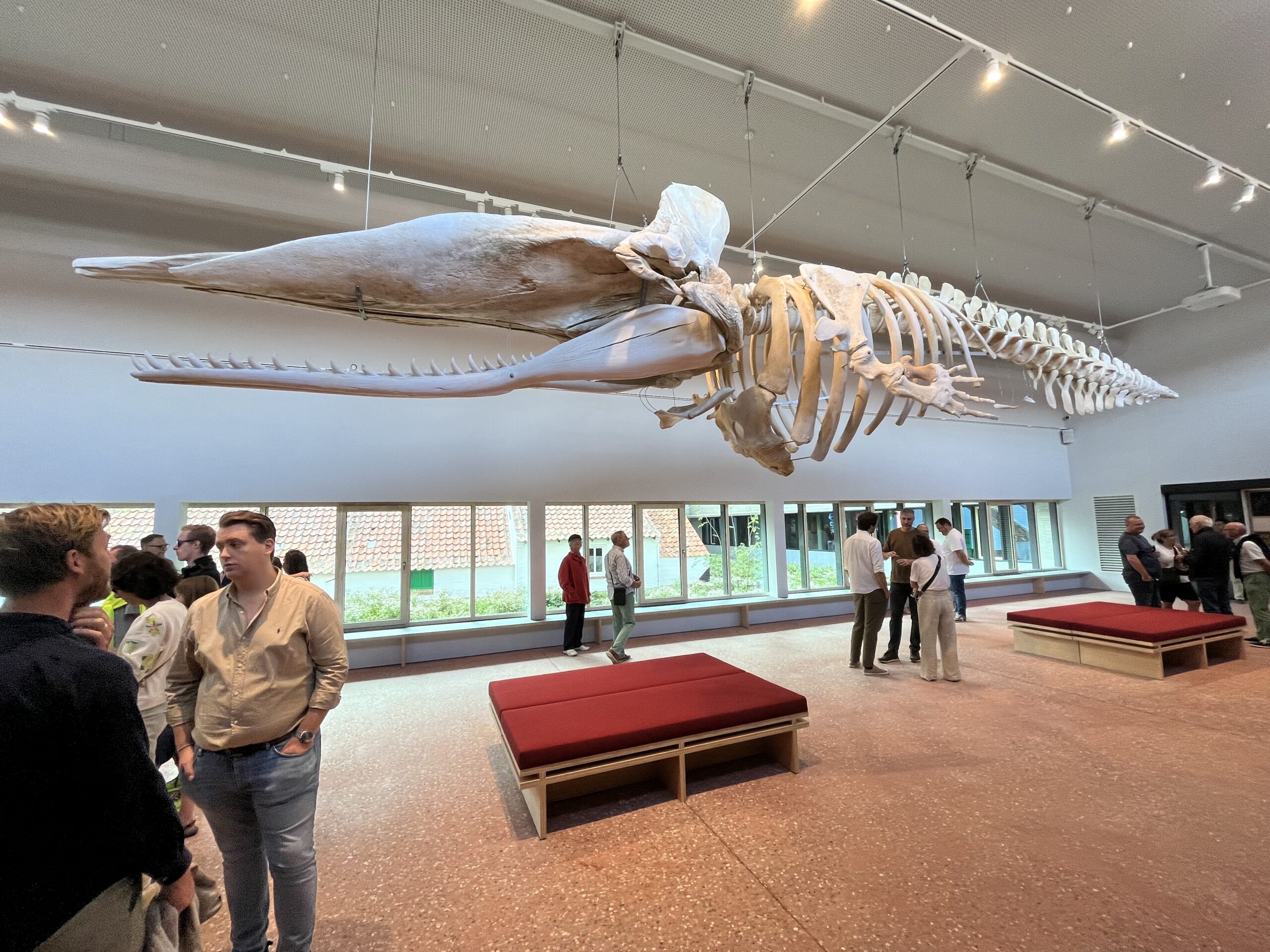
The new report ‘Washed ashore. Marine mammals in Belgium in 2024’ (only available in Dutch and French) is a publication of the Institute of Natural Sciences. The previous annual reports (available since 2014) can be downloaded here.

